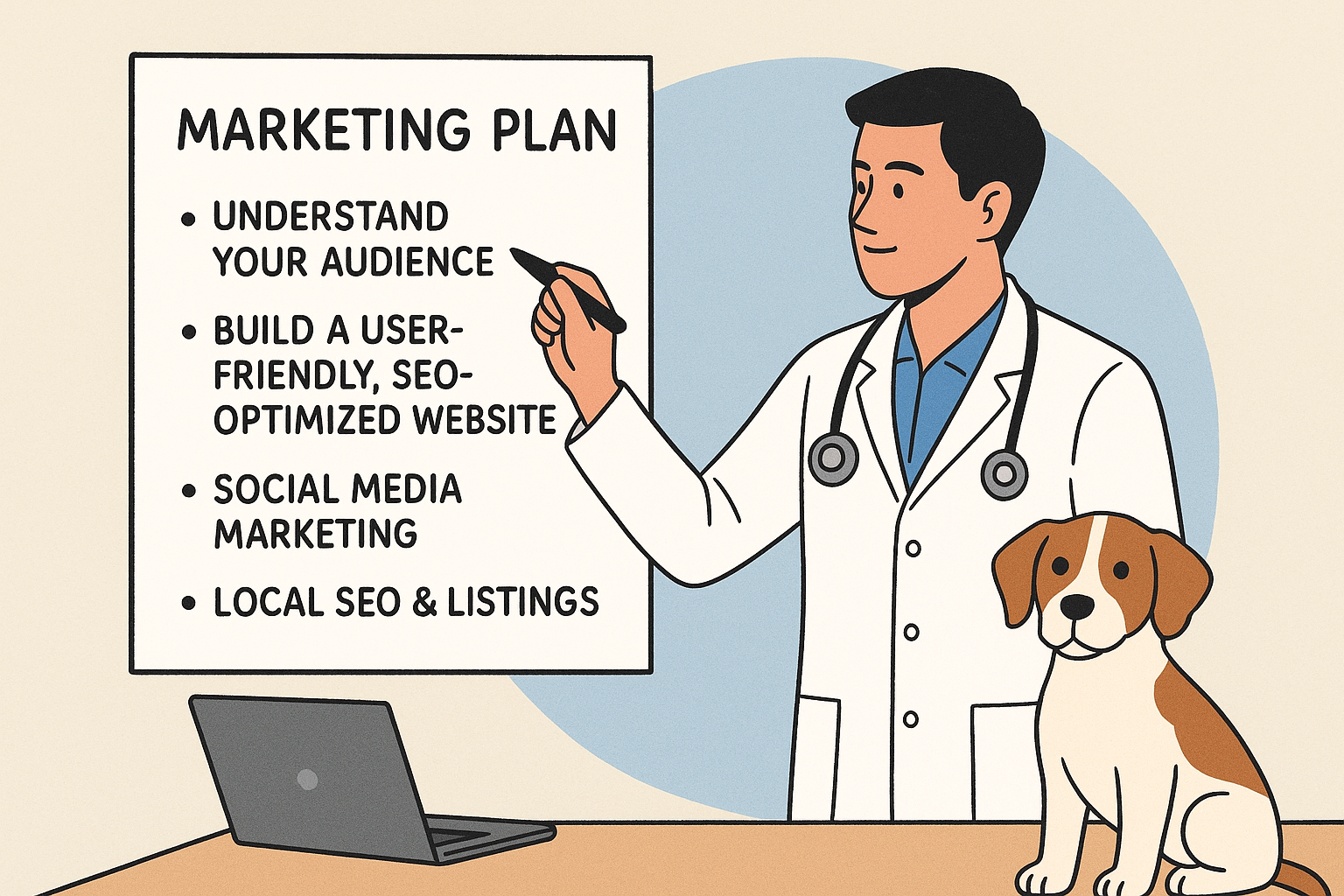
Starting your own veterinary practice is an exciting milestone—but without a strong marketing plan, even the most well-designed clinic can struggle to gain traction. A clear marketing strategy ensures that potential clients not only find you but also choose you for their pets’ care. Here’s a breakdown of the core elements every start-up veterinary practice should include in their marketing plan:
1. Define Your Audience
The foundation of any marketing plan is knowing who you want to serve. Ask yourself:
- What kinds of clients do I want to attract (families, pet parents, breeders, farmers)?
- What services are most important to them (wellness, surgery, dental, emergency)?
- Where do they live and how do they search for veterinary care?
A clear picture of your ideal client will guide every decision you make.
2. Establish Your Brand Identity
Your brand is more than a logo—it’s the story you tell and the trust you build. Define your practice’s values, tone of voice, and unique differentiators. Ask:
- What sets my practice apart from others nearby?
- How do I want clients to feel when they interact with my brand?
Your branding should carry consistently across your website, signage, social media, and in-clinic experience.
3. Build a Professional Website
Today’s clients expect to find you online first. Your website should be:
- Mobile-friendly and easy to navigate
- Optimized for local SEO (so you appear in searches like “vet near me”)
- Designed with clear calls-to-action (schedule an appointment, call now, request info)
- Updated with content like blog posts, FAQs, and service details
Your website acts as the digital front door of your practice—make sure it’s welcoming and informative.
4. Leverage Local SEO & Listings
When pet owners search for care, they often look locally. To show up:
- Claim and optimize your Google Business Profile
- List your practice in local directories
- Encourage satisfied clients to leave reviews
Positive reviews and consistent listings help build credibility and visibility in your community.
5. Invest in Content & Social Media
Educational content positions you as a trusted expert. Consider:
- Blog posts answering common pet health questions
- Short social media videos showing tips or behind-the-scenes at your clinic
- Seasonal reminders (tick prevention, holiday safety)
Choose 1–2 platforms where your audience is active (often Facebook and Instagram) and post consistently.
6. Explore Paid Advertising
Paid ads can give your start-up a faster boost:
- Google Ads targeting local pet owners searching for vets
- Facebook or Instagram ads to build awareness
- Retargeting ads to re-engage website visitors who didn’t book right away
Even a modest budget can generate measurable results when targeted correctly.
7. Track Results & Adjust
The most successful marketing plans evolve. Use tools like Google Analytics, call tracking, and social media insights to measure:
- Website traffic
- Leads (form fills, calls, appointments)
- Ad performance
Review your data monthly to see what’s working—and refine your strategy accordingly.
Final Thoughts
Launching a veterinary practice is about more than opening the doors—it’s about building a community of clients who trust you with their pets. A well-rounded marketing plan gives your start-up the visibility and credibility it needs to grow.
Next Step: Start small and practical. Create a simple marketing checklist with three actions you can take this month—such as setting up your Google Business Profile, drafting your first blog post, or posting an introduction to your practice on social media. These first steps will help you build momentum and confidence in your marketing efforts.



